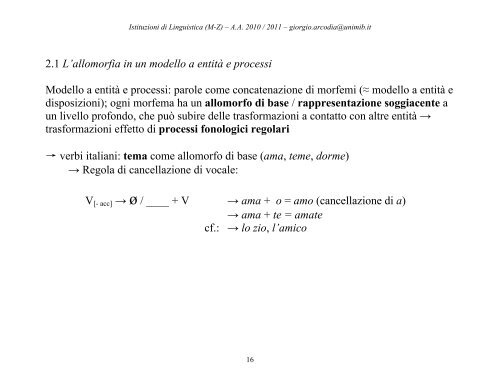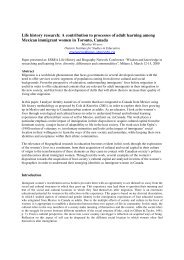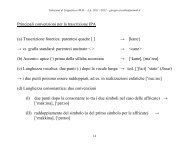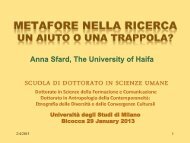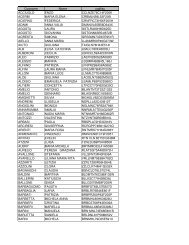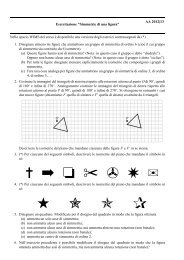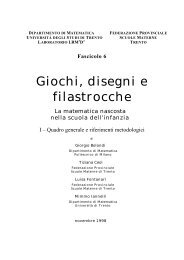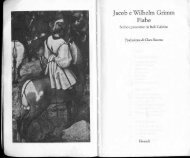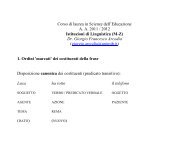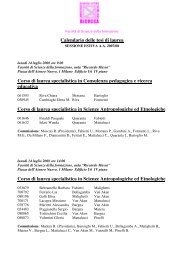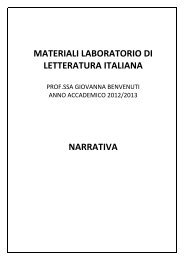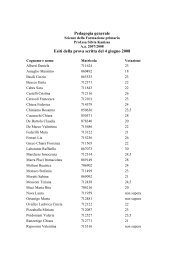morfema - Dipartimento di Scienze Umane per la Formazione
morfema - Dipartimento di Scienze Umane per la Formazione
morfema - Dipartimento di Scienze Umane per la Formazione
You also want an ePaper? Increase the reach of your titles
YUMPU automatically turns print PDFs into web optimized ePapers that Google loves.
Istituzioni <strong>di</strong> Linguistica (M-Z) – A.A. 2010 / 2011 – giorgio.arco<strong>di</strong>a@unimib.it<br />
2.1 L’allomorfia in un modello a entità e processi<br />
Modello a entità e processi: parole come concatenazione <strong>di</strong> morfemi (≈ modello a entità e<br />
<strong>di</strong>sposizioni); ogni <strong>morfema</strong> ha un allomorfo <strong>di</strong> base / rappresentazione soggiacente a<br />
un livello profondo, che può subire delle trasformazioni a contatto con altre entità →<br />
trasformazioni effetto <strong>di</strong> processi fonologici rego<strong>la</strong>ri<br />
→ verbi italiani: tema come allomorfo <strong>di</strong> base (ama, teme, dorme)<br />
→ Rego<strong>la</strong> <strong>di</strong> cancel<strong>la</strong>zione <strong>di</strong> vocale:<br />
V[- acc] → ø / ____ + V → ama + o = amo (cancel<strong>la</strong>zione <strong>di</strong> a)<br />
→ ama + te = amate<br />
cf.: → lo zio, l’amico<br />
16


